Greetings Wargamers and Hobbyists, and welcome to a bit of a tutorial-slash-review of my experiences creating my own cobblestone bases.
After seeing what other hobbyists had done for their Frostgrave warbands, I was inspired to try to make my own cobblestone bases. I loved the aesthetic of having models based for a medieval/fantasy urban environment. It would suit the game setting and be a nice change from my usual generic scrub ground basing; which I use for all my other gaming miniatures.
Disclosure: Some of the links below are affiliate links, meaning, at no additional cost to you, I will earn a commission if you click through and make a purchase. The commission earned helps maintain this site.
Early Research for Bases
Most of the bases I had seen people using were either pre-cast cobblestone bases that they had bought, or bases they had carved themselves by hand, most of which looked great.
However, when I thought about what I wanted to be able to do, I didn’t really want to have to hand carve all the bases I would want. I was planning upwards of three warbands for Frostgrave!
Also, I wasn’t happy about the idea of paying out to buy cobblestone bases from a retailer. I felt like I should be able to do a half decent job myself.
Perhaps a little presumptuous on my part, but I have done a fair bit of model building in my time. This seemed like a challenge.
Green Stuff World Rolling Pin
While looking at bases other people had created, I came across a product from Green Stuff World. It was a textured rolling pin.
It was engraved with a brick pattern, which because the pattern was irregular. Due to the size of the bricks and stones, when laid out horizontally as a base, it looked to me like cobblestones.
Checking out the images on the Green Stuff World website, though the pattern for the pin is called ‘bricks’. It looks pretty clear they are suggesting that it can be used for making bases to represent cobblestone. As well as walls.
This looked like the perfect tool to be able to make my own bases.
At around £15 or so for a single rolling pin, plus the cost of the modelling putty on top, I decided to do a bit more research into materials costs. I wanted to see what the ‘cost per base’ would actually work out at before going down this path.
It would be nice, after all, to be able to make my own cobblestone bases whenever I needed them. But, rather counter productive if I could buy them ready made for less than it was costing me to make them myself.
The Right Material for the Job
The obvious material for me to use for making the cobblestone bases themselves was of course Green Stuff modelling putty, or Kneadatite as it is also know (among other names – the technical description for this product seems to be “a two-part epoxy/polyamide sealant/adhesive”).
When I considered how thick I would want the bases to be, and the quantity involved, even when going with some of the cheaper options on ebay, and buying larger quantities of putty, the cost didn’t seem worth the effort compared to just buying bases ready made.
I had used two part putty for modelling many times in the past. Only ever on a small scale for conversion work and simple sculpting on models. Things like the odd bit of chainmail or an amour plate etc, never anything overly complex.
What I needed was something that was less expensive to buy than modelling/sculpting putty. It needed to be strong enough to do the job. Also, malleable enough to be able to press the design into using the rolling pin.
Modeling Clay
After a bit of searching, I started looking at modelling clay. At the time I thought was probably a bit of a long shot.
My memories of using modelling clay at school many years ago was that it was dry and brittle, and needed to be fired in a kiln.
I had also seen recently online another gamer using clay to build up the outer layers of a fortification he was building for an orc army. I recall the issue he was having was some shrinkage (no jokes please) around the joints. Also, cracking as the clay dried out.
I didn’t expect it to be a suitable material for this project. But it seemed like it might be the cheapest option.
NewClay
As it turned out, I found a clay product which I hoped might do the job. It was in the price range I was looking for to make it cost effective.
Due to the concerns I had about using clay, I read up on the product to see what it was like, and what it could be used for. I found that as well as being an air-dry clay (so no monopolising the oven to bake anything inedible and upsetting the wife), it was ‘nylon reinforced’.
This is meant to prevent cracking and shrinking as the clay dries. Also, it gives it greater strength to make it less likely to break if dropped.
Here is what I found:
Immediately looking at the quantities this stuff could be purchased in and the pack price, I knew it was suitable for the project.
The description suggested that it would be strong enough to meet the requirements. So, I ordered a pack of about half a kilo if I remember correctly, and waited for it to arrive.
First Trials With the Cobble Bases
In the meantime, I had found it necessary to do some DIY in the house using some milliput to carry out a small repair. The rolling pin had arrived and I had a bit of milliput left over I decided to try it out.
Here are some ropey test bases that I created. A bit rough around the edges, but the rolling pin worked well. I had worked out how to carefully clean it down after each use. I wanted to make sure I didn’t ruin it by getting it caked in rock hard putty.
Although the bases hadn’t come out quite as neat as I had hoped, it was a first attempt. I had a target to beat once the clay arrived; neater around the edges, and as consistent in thickness as possible.
I gathered my tools and my wits.
The clay arrived. I was excited and keen to get started.
All Set and Ready to Begin
When I had tried out the rolling pin with the milliput I had just squashed a ball of putty down onto the bases. Then rolled it with the textured rolling pin.
The result was uneven thickness and rough edges. I had little control over how the putty spread out over the surface of the base as it was compressed.
I decided that I had two options for getting neater edges on the bases. One was to use the same process and then smooth the edges by hand while the clay was still soft.
The other was to roll out a sheet of clay and then use a circular cutter to cut bases out of the pre-textured sheet of clay. Just like cutting biscuits out of a dough mixture.
I decided that the second option would give me the consistency I wanted and should also be much quicker. Being clay, I could simply roll up the remainder of it up after cutting out as many cobblestone bases as I could. Then repeat until I had used up the portion of clay I was working with.
Like I said, just like making biscuits!
Additional Tools Needed
I decided I need the following additional tools for this project, over and above the clay and the rolling pin:
- 2 pieces of mdf or other board to place either side of the clay when rolling it out. This was to ensure a consistent thickness
- 1 standard smooth rolling pin – for rolling the clay to thickness ready for texturing
- A circular cutter to cut out bases from the clay once rolled and textured
- Several round bases to mount the clay cobblestone bases onto once complete
- Some regular flour to dust both the clay and the roller to stop it from sticking. Sticking would make a mess of both the bases and the rolling pin. This was something I had learned from making the milliput bases.
Strangely perhaps, the item from the list above that took the longest to acquire was the circular cutter.
I checked all the biscuit cutters we had. I found them all to be far too large for the 25mm diameter I was aiming for. Not surprising really. I mean how many biscuits have you ever seen the size of a two pence piece?
Doing the usual I checked online. I didn’t get any joy there either.
Making My Own Cutter
Then I hit on the idea that I could make my own cutter. All I needed, after all, was a tube with edges thin enough to cut through the soft clay.
I looked at various tubes and bits of plumbing I had laying around. Eventually I found the perfect thing. It was an empty cocktail stick pot. I then proceeded to cut the bottom off to make it into a tube.
It had to be a tube. I needed to be able to push the cut bases out from the end of the tube. That would mean needing to be able to push an implement through it.
Prep Time
Getting my kit together, I wiped down a space on the kitchen worktop to make sure it was free of any dirt or dust etc. I figured the melamine coated worktop would be an easier surface to clean afterwards than a wooden chopping board.
I then placed the two pieces of mdf on the counter with a space in between to lay the clay in. It was narrow enough for the smooth rolling pin to rest on as I rolled out the clay. That would make sure the clay ended up no thinner than the thickness of the mdf.
The Practical Portion of the Exam
Before laying the clay out on the worktop, I threw down some regular baking flour. Just like you would it if you were rolling out dough. Also, for the exact same reason – to stop things from sticking.
I also rubbed flour over the rolling pin before rolling out the clay. Once I had rolled out the clay using the smooth rolling pin, I was ready to apply the textured roller.
I had rolled out the clay to just thicker than the mdf board I was using to manage the thickness of the clay. So, that when I used the textured roller, I could press down hard onto the board and make sure the texture went down firmly into the clay.
I didn’t want to leave any areas of the clay untextured or with very shallow detail imprinted into it.
Getting a Good Impression
When using the textured roller I found that in order to get a clean print onto the clay, it was necessary to get a single clean roll from one end of the clay to the other.
To achieve this I rolled slowly and carefully; making sure that the rolling pin was pressed down hard all the way across the clay. I pressed my fingers down on the top of the roller as I went.
If the roller comes away from the clay, or if you accidentally go backwards, there is a chance that the pattern will overlap itself and won’t look right. If that does happen, I recommend re-rolling the clay and starting again.
Cutting the Clay Away
Once the texture had been applied to the clay and I was happy with it, I used the circular cutter I had made to cut as many cobblestone bases as possible out of the clay I had rolled.
I pressed down hard into the clay. I gave the cutter a small twist to cut through the clay and detach the cut bases from the clay around it.
After lifting the cutter away, the sticky edges of the fresh cut clay would make the base stick to the inside of the cutter at the bottom end. So, I used the the textured rolling pin (which was only slightly narrower than the cutting tube) to gently push the cut base out of the end of the tube.
I wanted to avoid having to handle the new cut bases and risk leaving finger prints in the soft clay. So I pushed the bases out of the tube straight onto a spare cutting board. Then I could then move out of the way.
The clay was still soft enough so that if I tried to pick it up by pinching the edges, it could become deformed. I didn’t want to apply any more pressure than necessary to the bases until they had started to dry out.
I continued to cut bases from the clay until there was no more room to cut more circles out.
Using the Excess
I gathered together the remainder of the clay with all the holes cut out. Then I mashed it all together, re-rolled it out, and cut some more bases.
I continued this process until the clay was all used up.
All the bases were laid out on a piece of board. I left them to harden for a good 24 hours.
Once they cobblestone bases were out of the way, I used an old toothbrush and warm soapy water to give the textured rolling pin a good scrub before the clay started to dry.
Tidying up the Cobblestone Bases
I noticed while cutting the cobblestone bases out that the nylon fibres that run through the clay to strengthen it were protruding from the edges of the bases (clearly visible in the picture above), like some strange wispy beard.
Of course these had to go. After trying a couple of ways of cutting these away, I found that the simplest way was with a pair of scissors, rotating the base and cutting the nylon fibres as I went. Which should be done over the bin or sink.
Cobblestone Ready to Mount
Once this was done, the clay base toppers were ready to mount onto a solid mounting base.
I wanted to do this to make sure that the clay bases wouldn’t come apart if dropped. Also with the general wear and tear of use. I wasn’t sure about how strong the bases would be over time having not used the clay before.
The clay toppers were glued to mdf bases using a strong ‘no-nails’ style grab adhesive.
Once the cobblestone bases had been mounted, I was eager to get cracking. I wanted to see how some of my Frostgrave miniatures looked on the bases. So I started mounting models.
What I found was that although the surface of the clay was smooth and took superglue fairly well, the clay surface would be strong enough to hold a plastic or resin miniature, but not a heavy metal miniature.
So I pinned all the metal miniatures to the base using cut paperclips and a small pin vice. Once pinned, even the metal miniatures sat just fine.
A Note of Caution
One thing I did find with the clay bases is that although the nylon fibres run through the clay, the outer surface of the clay could be brittle. If a model was dropped, the feet might come away from the base with the top surface of the clay base still attached to the feet.
On the odd occasion this happened, I simply glued the feet back down to the empty footprints on the base.
This could be avoided altogether by pinning the lighter plastic models to the bases as well. But I haven’t found this to be enough of an issue to warrant the extra time needed to accomplish this.
Standing Tall – Mounting the Clay Toppers
After mounting a few models, I wasn’t sure if the mdf bases made the overall completed base and clay topper too high. They almost looked like a display base.
I thought I could get away with it. They didn’t bother me much. But after seeing them alongside the Frostgrave miniatures of some club mates and some feedback from them, I decided I needed to find a solution.
To get around the issue, I went about detaching all the models from the bases (using a sharp knife and an appropriate level of care). It wasn’t too much of an ordeal.
I managed to save all of the clay toppers and the mdf bases they were mounted on.
Then I went about looking for an alternative foundation base to mount the clay bases to. I settled on using two pence pieces, which were only a shade narrower in diameter than the clay bases themselves. They would provide a hard solid base to glue the toppers to. I used the same grab adhesive I had used before.
Doing Some Sanding
Because the first batch of bases had been quite thick (thicker than I expected really), I went the extra mile.
I rubbed them across some coarse sandpaper to actually make the clay base toppers thinner as well. By the time I had sanded them and mounted them on the coins, they were barely any thicker than the 3mm thick mdf bases by themselves.
This was a bit a test of the strength of the nylon reinforced clay. I was impressed that none of them cracked or broke. The clay was proving to be well up to the job.
This photo shows the difference in overall base height from the first mounting onto the mdf base to the coin mounted and sanded second attempt.
Of course for later batches of bases I simply rolled the bases thinner to start with.
Painting up the Cobblestone Bases
Once I was happy with the completed cobblestone base, and had mounted some more models, I tried out some painting.
I found that the bases took spray primer just fine, no concerns there at all. The painting itself was business as usual as far as painting goes. Below are some of the schemes I tried. They also show off what the texture looks like with some paint on it.
I just went for a simple grey stone colour for the cobblestone bases. Then went over with a light wash of black ink. I used other colours in some areas gave some interesting results as well.
Also, I tried out some green and some blue. Both came out well and added variety to the look of the bases.
I painted the edges of the clay base toppers, but left the coin black. I plan to apply some snow to the bases for a final step. When I can make the time of course.
Onwards and Upwards
So there we have it, making your own cobblestone bases from start to finish, including my hiccup with the base thickness.
Once this had been accomplished and I was pretty pleased with the result. The clay had performed well, and the textured roller was easily worth the expense for the time it saved.
Other Uses
I started to think about what else I could do with the process. I had made about thirty bases and still had some clay left over.
Then I decided to make some scenic bases for the treasure tokens I had bought for Frostgrave (from The Dice Bag Lady).
For these I was able to use a biscuit cutter for the larger ones. For the smaller ones I took the cap from an aerosol can. I cut off one end, just like I did with the cocktail stick pot.
Now I just need to get them painted, but it gives you an idea of what I can do now I have established the process.
In addition to this, at some stage I would like to see about using the rolling pin and clay combo to make a cobblestone road, and even walls. Because the clay is an inexpensive option, but has proved quite strong, I want to push both products to see what I can get out of them.
This the end of the cobblestone base tutorial, but if there is anything you need to ask, if anything is unclear, or I seem to missed anything out, feel free to drop in a comment and I will come back to you.
Thanks for reading,
Eternal Wargamer
Miniature Basing Tutorials
More ways to create unique and interesting basing for your miniatures.
- Wargaming With the Next Generation – Part 2 - January 21, 2018
- The Big Wargaming Toy Debate – Allowed or Not? - January 2, 2018
- Are Breakers from MOM Miniatures Worth Buying? (Review) - December 18, 2017
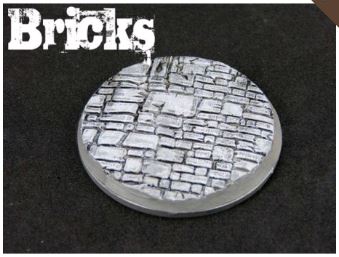

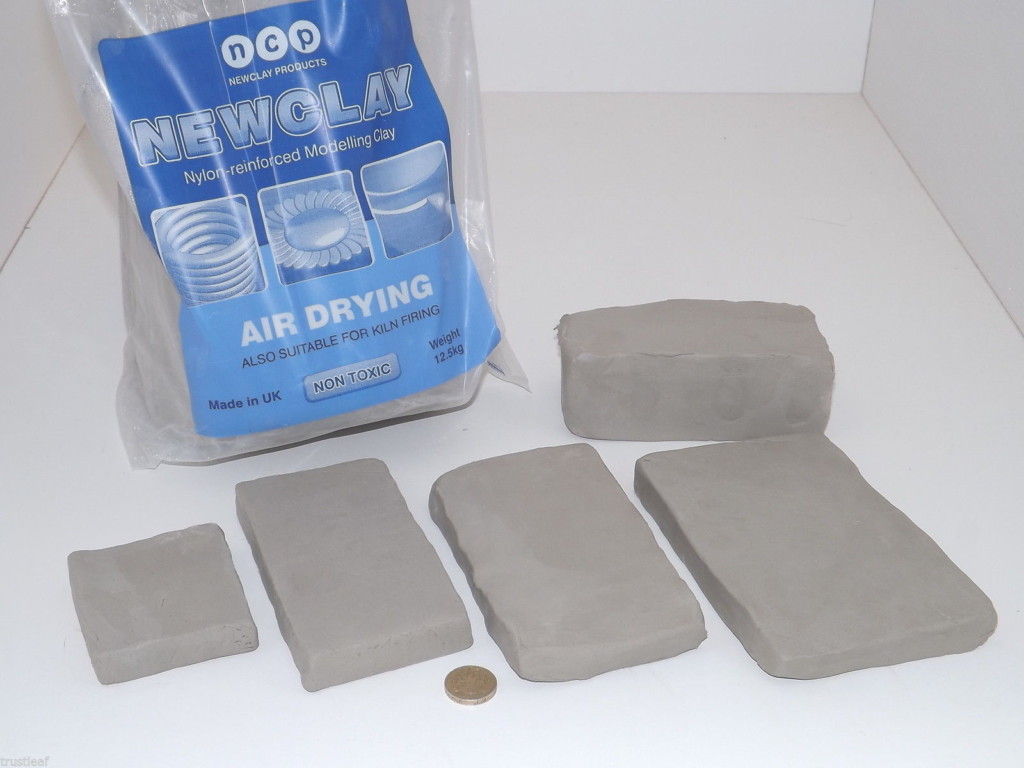

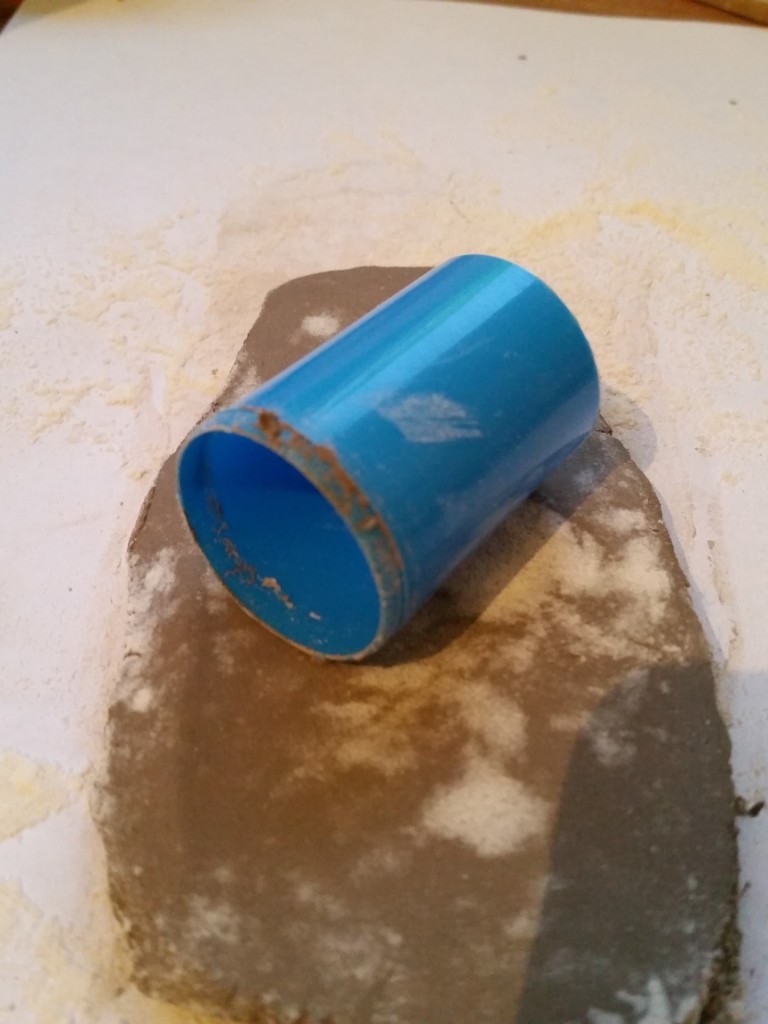
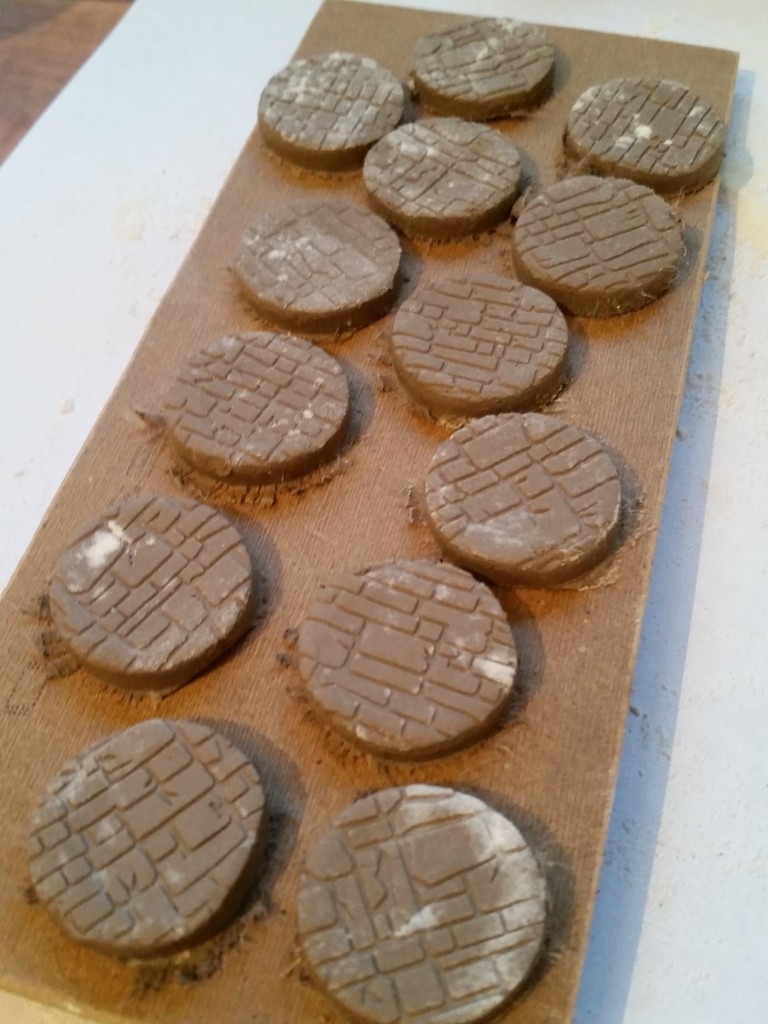
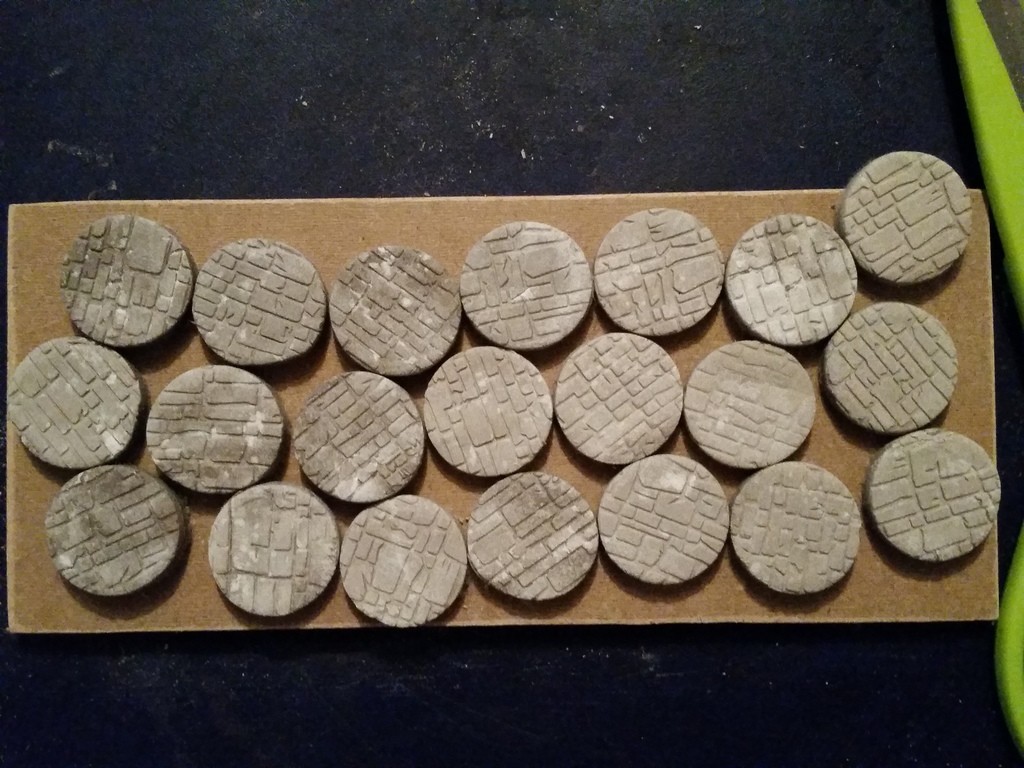
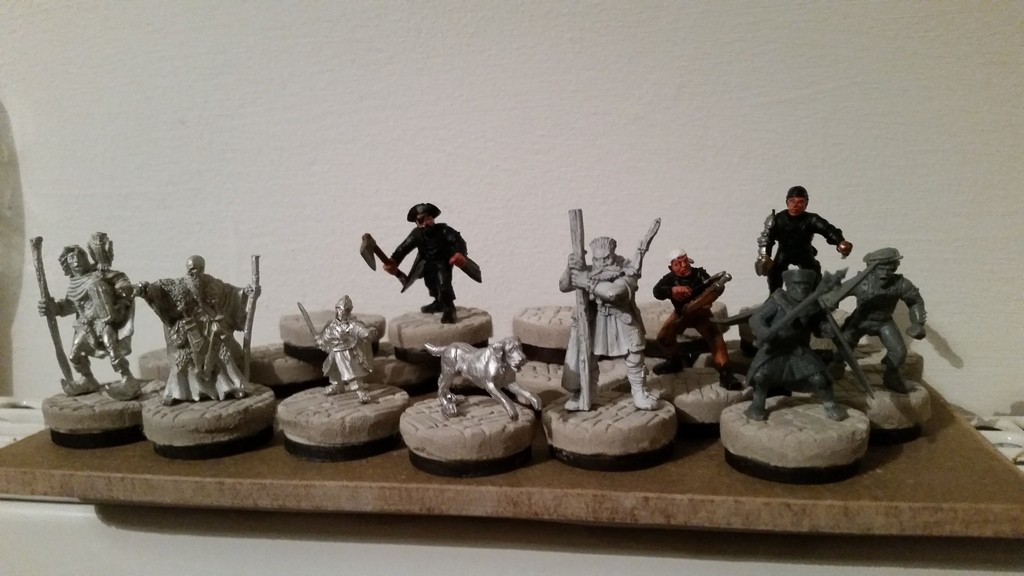
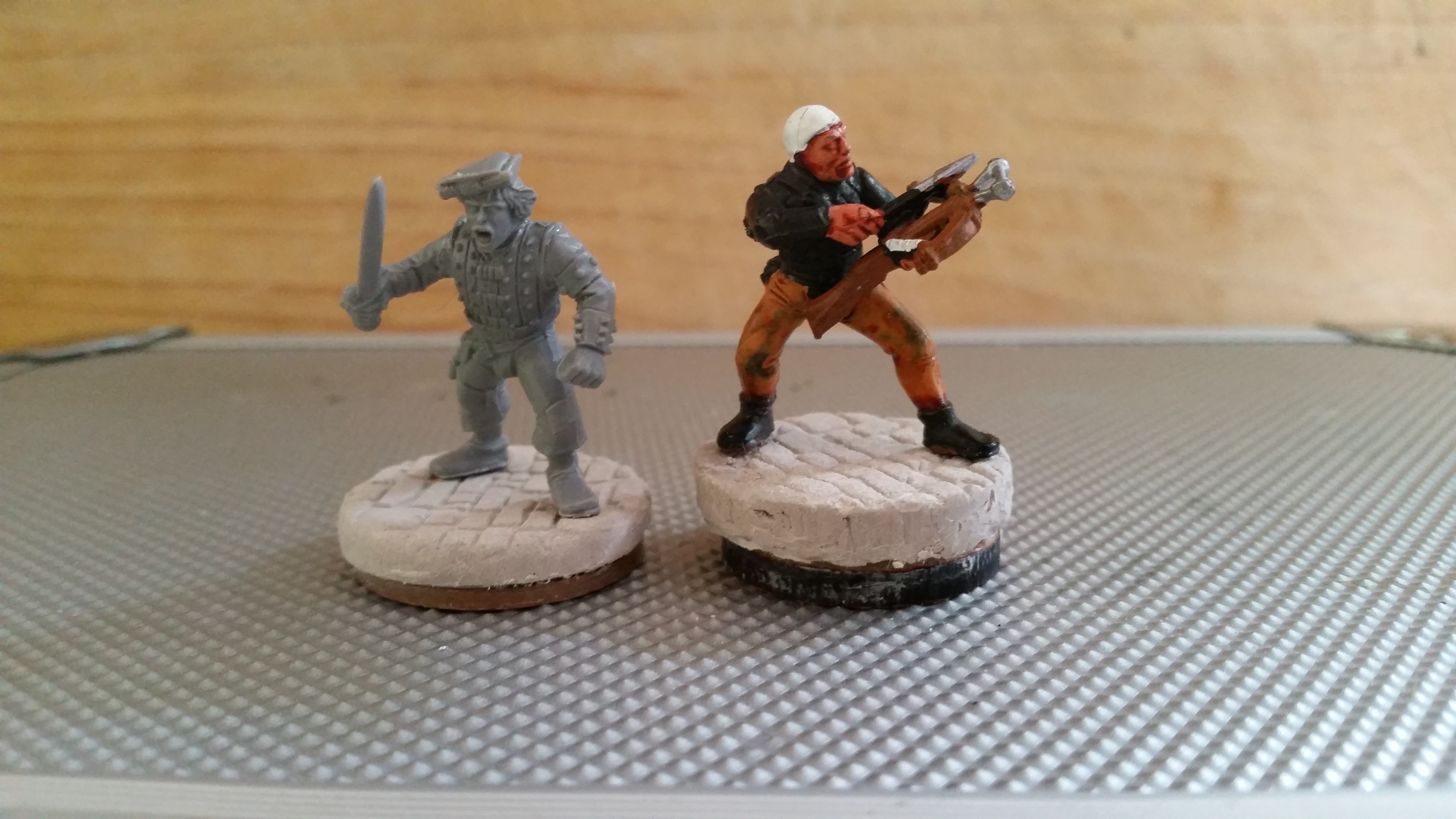
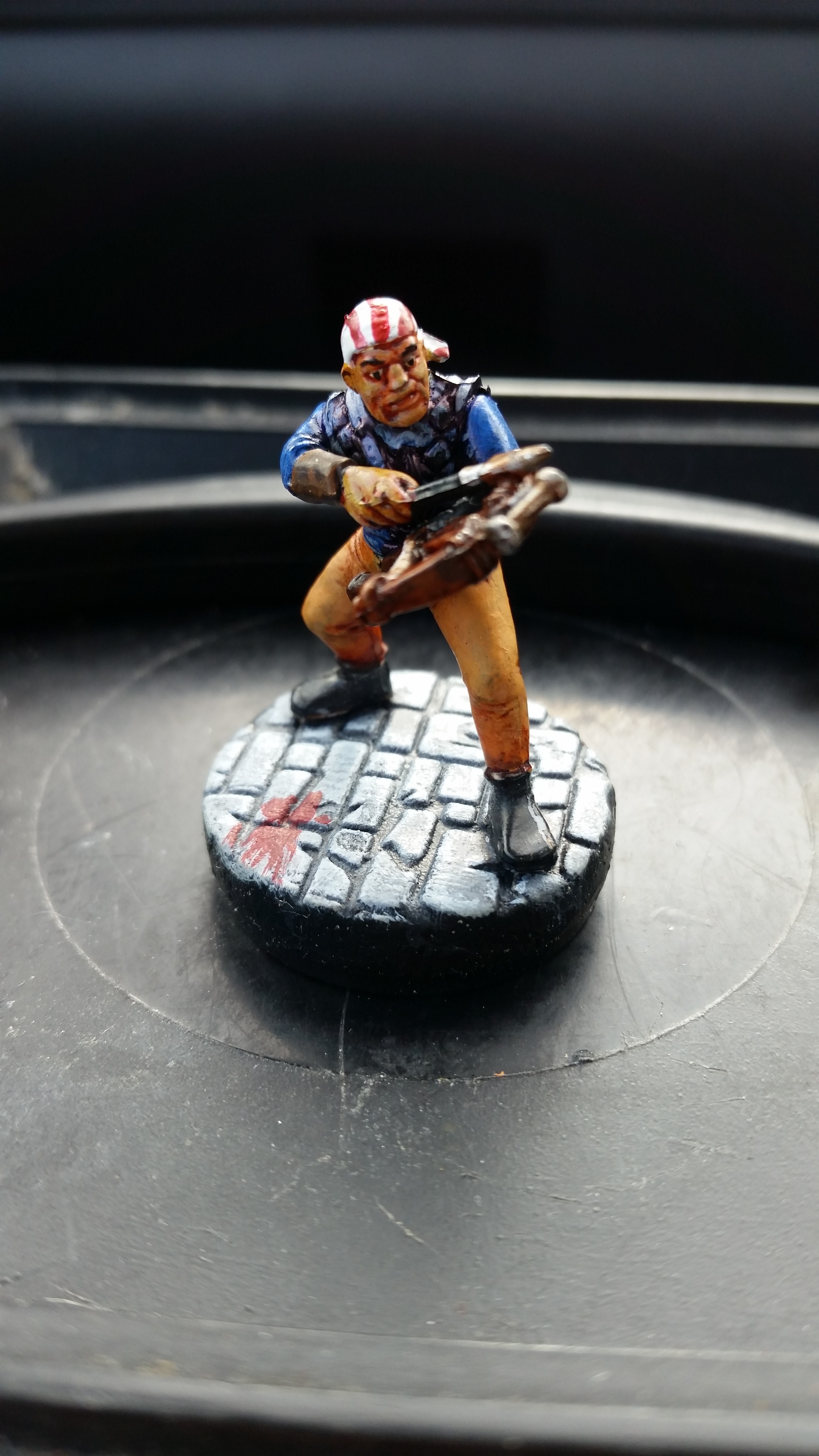

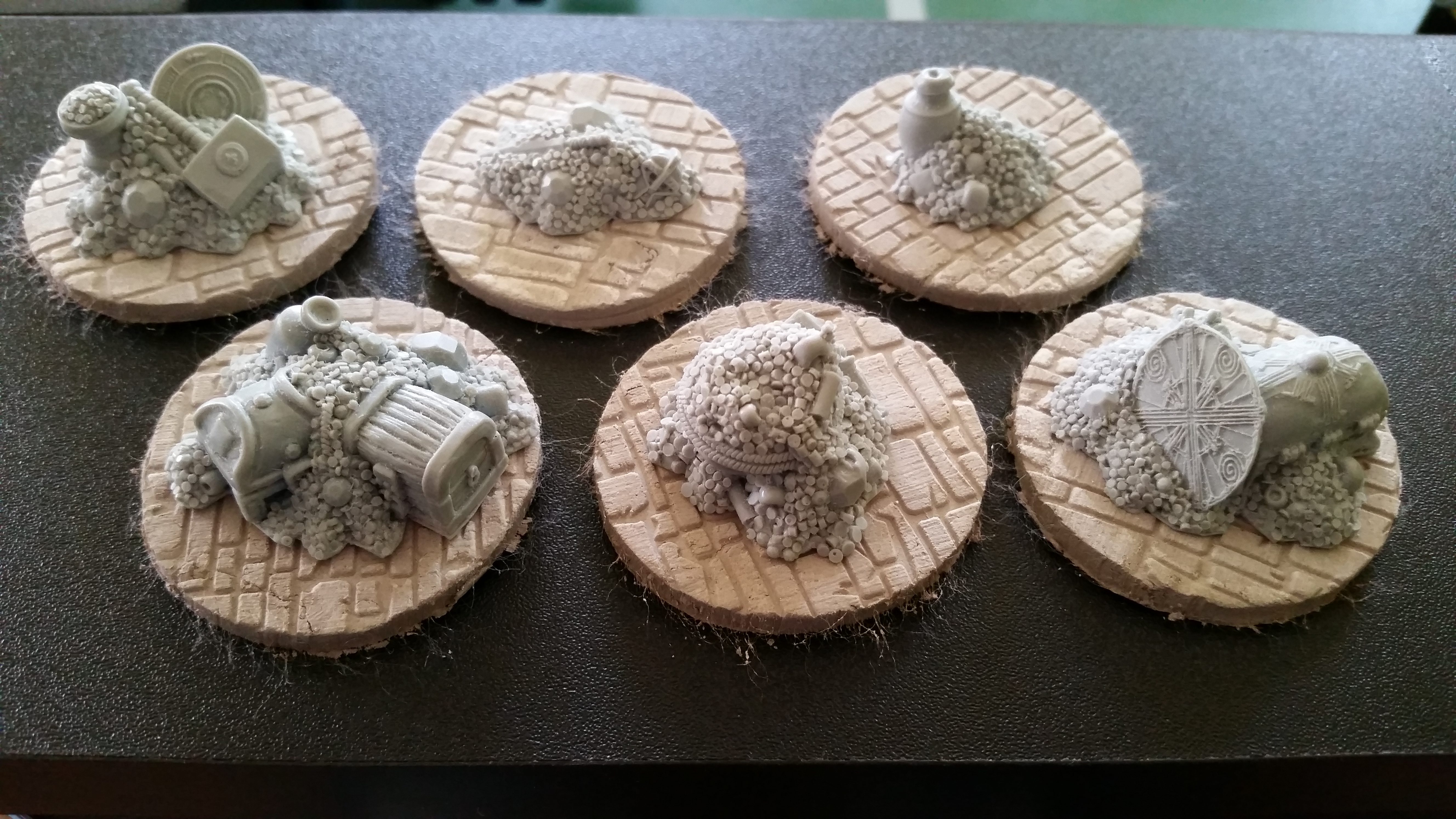
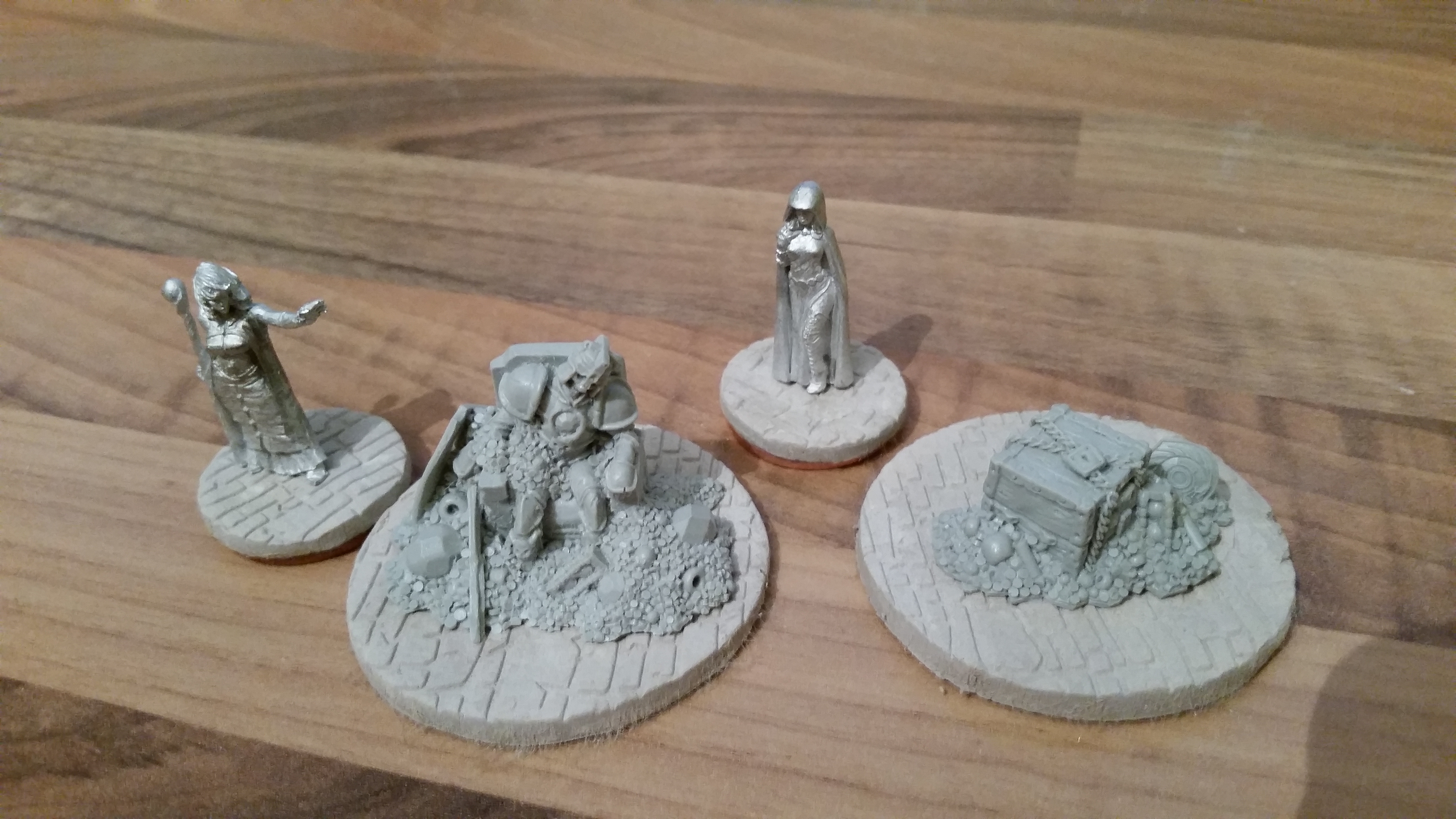
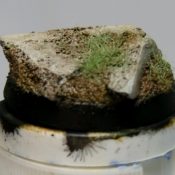

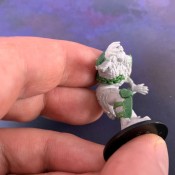
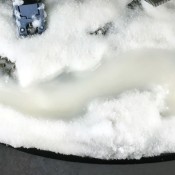
Well done with the tutorial.
I would have been concerned with the fibers in the clay showing on the surface, not just the edges, but I can’t see them at all. The fragile nature of the clay, compared to something more traditional, I think is a pretty minor point for a base. I’d say you found a great material to work.
Thanks mate – I didn’t even realise the fibres would be visible at all until I cut the clay. Reminds me of teeny tiny reinforcing bars in concrete.
Nice tutorial, the bases look great and I like the details with all the stones.
Thanks Joe. I’m pleased with the way they came out, now looking forward to trying out some snow effects!
I’ve got some tutorials on snow ;)
That reminds me, I need to do one on icicles…
Why does that not surprise me!
They’re good ones, too. I tweaked it a bit, but it was basically your technique that I used on a bunch of my Space Wolves last month, and they came out great.